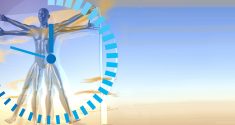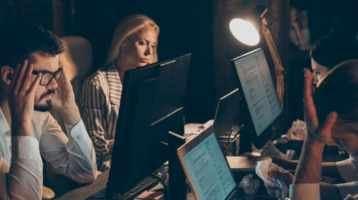Afternoons are a sleepy time for many. Your mind is foggy, your eyelids heavy and your entire body yearns for a nap. This afternoon slump may be programmed into the human body.
Although the Western world does not generally encourage napping for adults, many people are not as alert in the afternoon as they would like to be. There is a reason we all experience an afternoon slump from time to time: It is programmed into our bodies.
Afternoons and Circadian Rhythm
There are several reasons that we often tend to feel tired and groggy in the afternoon. First, many people eat a carb-heavy lunch, leading to what some term a “sugar crash.” In addition, many people are feeling a rebound in fatigue that was temporarily held at bay by morning caffeine. Many people are mildly dehydrated, which can subtly yet negatively affect energy levels as well. Lastly, insomnia and sleep deprivation also play a huge role, as a decreasing amount of modern people get the rest that they need to function well throughout the day. If you are not getting enough sleep at night, other small factors can have a large effect on your alertness in the afternoon.
There are also scientific reasons for the afternoon slump that have nothing to do with lifestyle. Stress, a modern epidemic, can deplete the brain of resources, thus leaving us mentally and physically exhausted. Body temperature and cortisol levels, both important factors in alertness, fall sharply in the afternoon.
Is Napping the Answer?
For many people, a quick afternoon nap helps them to resume their day refreshed and regenerated. However, it is unknown whether this has overall positive or negative effects on the circadian rhythm. Napping is common throughout the world and has been found to have positive effects on both physical health and mental function. However, it also may make it more difficult to sleep at night, leading to even more of an afternoon slump the next day. This can create a self-perpetuating cycle that leaves a person exhausted throughout the day and unable to fall asleep at night.
Getting Through the Afternoon Slump

- Get plenty of sleep at night. Sleep-deprived people are more likely to struggle with fatigue in the afternoon.
- Choose lunch foods that are high protein and low fat. Fat takes a lot of resources to absorb. Protein, on the other hand, is easily digested and will keep your body supplied with energy for hours.
- Increase sunlight exposure. Light is proven to make people more alert.
- Take a walk or exercise. Exercise, even the lightest activities, causes a slight bump in cortisol and body temperature that will wake many people up.
- Have a chat. Social activities make many people more alert.
- Avoid caffeine and sugar in the morning. These both give you temporary energy, but cause an even greater dip later in the day.
The afternoon slump is a common problem with a scientific basis. However, many people simply cannot stop functioning when the clock strikes two. By understanding why you and the people around you are so tired and unmotivated in the afternoon, you can get the energy you need to power through the day.







